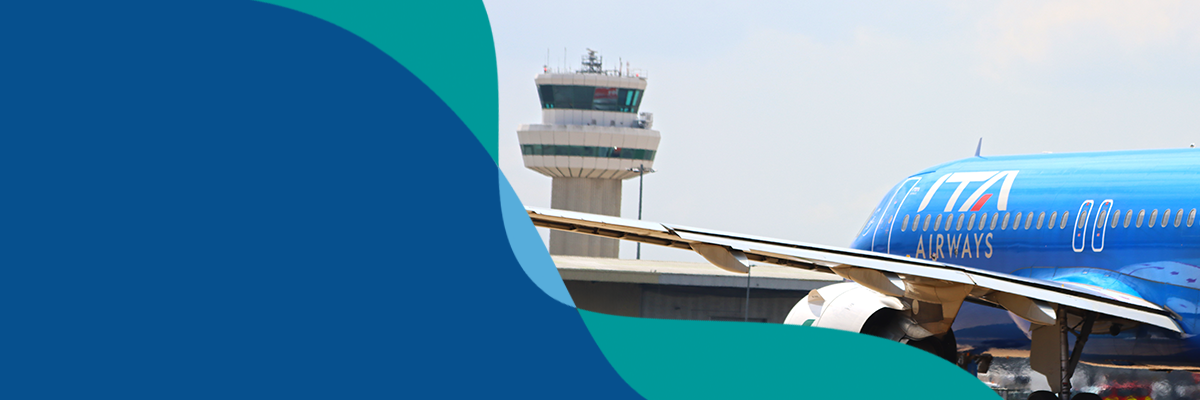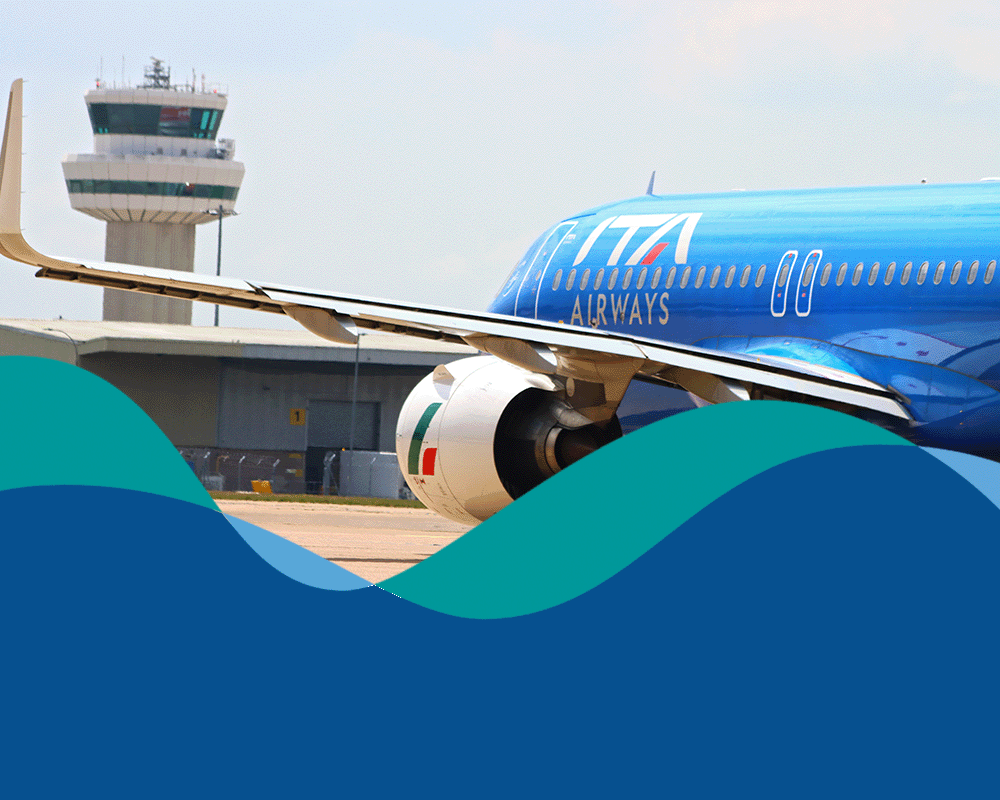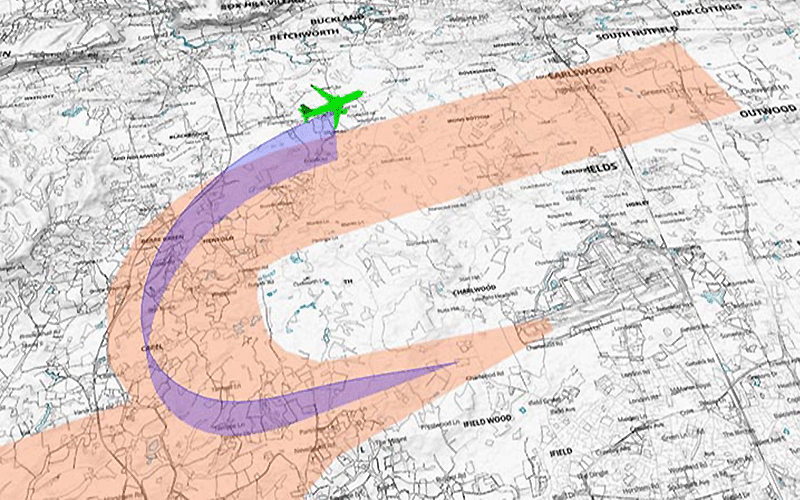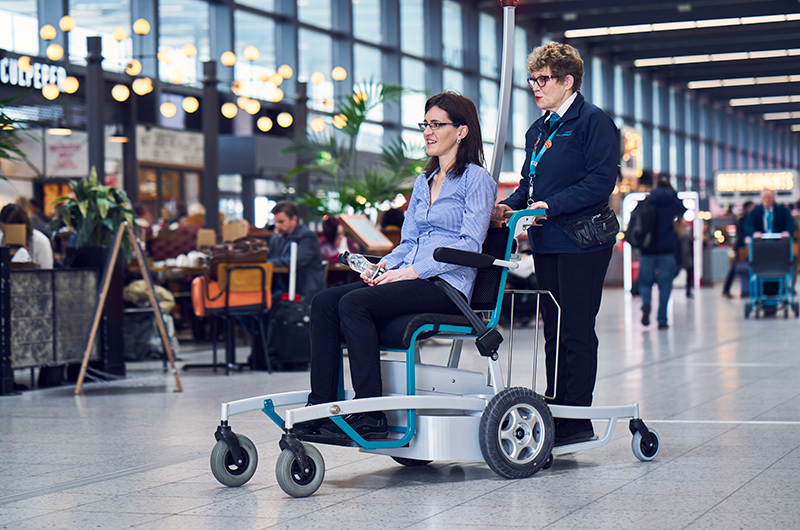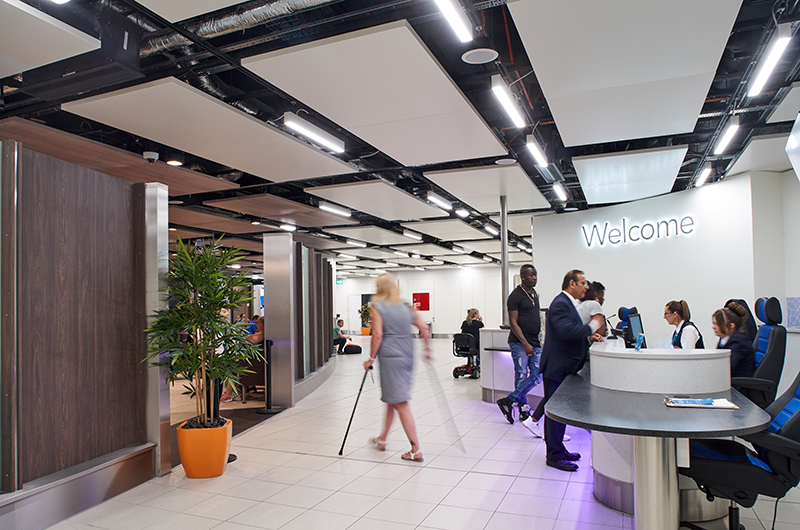Changes to Route 4
The CAA decision on the Route 4 Standard Instrument Departure (SID) routes Post Implementation Review in April 2017 has been quashed by the Court at the request of the CAA. The process to date has been complex. Before outlining what the court action means, it is worth explaining step by step how the current situation arose and why airspace around Gatwick – including Route 4 – has been redesigned.
Route 4 is a departure route for aircraft taking off from London Gatwick toward the west. Soon after take-off, aircraft wrap 180 degrees round to the right and head east, flying close to areas of South Holmwood, Leigh, Redhill and Reigate.
Why does airspace need to be redesigned?
UK airspace was designed over 50 years ago and its current capacity is approaching its limits. To ensure the UK can meet future demand, the Government’s Future Airspace Strategy sets out a plan to modernise airspace. It proposes replacing ground-based beacon technology with modern satellite technology for air navigation.
What does this mean for London Gatwick?
London Gatwick – and all other UK airports – have or are in the process of redesigning their departure routes so that aircraft can use new satellite-based navigation technology.
In 2013, we sought the CAA's approval to implement changes to all nine of our departure routes. These changes were approved by the CAA in August 2013, following our airspace consultation.
Post implementation reviews
After approval of new route designs, and after the routes have been flown for a while, the CAA performs post implementation reviews. This is to see if the predicted impacts and benefits of the airspace change happened in practice.
In 2015 the CAA reviewed all nine of our redesigned departure routes and approved the majority. However, they found that Route 4 had not delivered the aim of the airspace change and required it to be modified. Minor changes were also required to two other departure routes.
Following the CAA’s finding on the redesigned Route 4, we submitted an amended Route 4 proposal. The CAA ratified this following their Post Implementation Review in April 2017.
Legal challenge
A community group – Plane Justice – sought a judicial review that challenged the CAA’s Post Implementation Review decision to ratify the revised Route 4 departure route.
Following investigations, the CAA asked the court to quash their previous decision. This brings us to the present day.
Why did the CAA reverse their previous decision?
During the process of responding to litigation the CAA discovered that the historical changes to the conventional route were not for entirely the reasons originally identified.
The formal notification issued to us by the CAA is available to read online. The letter states that ‘it became apparent that magnetic drift was not the predominant factor causing displacement of Route 4 from the Noise Preferential Route (NPR). The CAA considered that it could not allow its decision to stand where such a decision was based upon a misunderstanding of the relevant facts.’
This information was not previously available to either the CAA or Gatwick. Because the CAA considered that we could not have conducted a proper consultation in 2016, it could not allow its decision to stand.
What is happening now?
6 May 2020: The CAA published the CAP 1912 Post Implementation Review Report. In this, they confirmed the requirement for us to remove all temporary Route 4 satellite-based departures routes – RNAV1 Standard Instrument Departures (SIDs) – introduced on 26 May 2016.
After the CAA decision was published, Gatwick and our partners began to prepare the necessary changes for the safe withdrawal of the temporary Route 4 RNAV1 SIDs. This had to consider the complexities of reverting from a more technically advanced route to a legacy structure (a revision not previously undertaken in the UK).
We met with the CAA and with the air traffic control service providers (NATS and ANSL) in July and August to provide further details on our plans to implement the requirements of CAP 1912.
The plans proposed aimed to mitigate the safety and operational risks and issues identified. They are described in some detail in the consolidated notes of these meetings.
9 September 2020: The CAA wrote to us outlining their position in response to our plan. They acknowledged the increased complexity and safety risks due to changes in route connectivity. They also recognised the need for the conventional SIDs to be truncated so they could connect seamlessly to the structure of the airways above southern England.
The CAA also accepted that a series of airspace changes implemented over a short period to effect this change was not desirable due to increased safety risk. They agreed to a single date on which all associated changes would be implemented: 25 February 2021.
All changes required by CAP 1912 and our subsequent plan were implemented successfully on 25 February 2021.
· The RNAV1 SIDs FRANE, LAM, BIG and ADMAG have been removed.
· The Clacton (CLN) and Dover (DVR) conventional SIDs have been truncated into FRANE and MIMFO conventional SIDs.
· The changes were published in the UK Aeronautical Information Publication (AIP).
· All air traffic control systems and procedures have been updated successfully.
Following the removal of the RNAV1 SIDs, as per CAP 1912, airlines continue to fly Route 4 SIDs. The track over the ground is guided by a satellite-based coded overlay of the conventional SIDs. Because coded overlays are created outside of the regulated process it is not possible to predict the variations in aircraft track that may result. The separation between departures using Route 4 has been temporarily increased to ensure the safe separation between departing aircraft.
We completed a track-keeping performance with ANSL to monitor aircraft in the first turn on Route 4. ANSL is reviewing the results of the monitoring exercise. We continue to closely monitor track performance across all our departure routes and report track-keeping performance via our quarterly and annual noise performance reports.
2018 Airspace Change Proposal - considering the implementation of Performance Based Navigation on Route 4
In March 2020, the CAA explained it was not satisfied that the existing pattern of traffic – using the temporary RNAV1 routes – provided an adequate baseline or ‘do nothing’ option against which to assess the proposed route options developed during stage 2 through engagement with industry and local stakeholders.
Following this, we have actively sought to address the problem of the baseline data option and engaged the CAA to seek a workable solution.
February 2021: The CAA confirmed that the conventional route track, after the removal of RNAV1 SIDs, is the appropriate route pattern to be used to determine the baseline or ‘do nothing’ option.
The added difficulty was generated by the highly disruptive impact of COVID-19 on traffic patterns.
To address this issue, we proposed using the average conventional route track, post-25 February 2021 after the removal of the RNAV1 SIDs, as the route over the ground and applying the traffic volumes and SID destinations using 2019 traffic volumes. This approach would provide a more representative ‘do nothing’ option as required by the CAA airspace change process.
October 2021: The CAA reviewed and endorsed this proposal.
Given the impact of the above issues, our plans for progressing with this airspace change have been significantly delayed. We revised our airspace change timelines and proposed a new Stage 2 Gateway in May 2022.
July 2022: In line with plans for stage 2 of the process, we resubmitted the design principle evaluation and the initial options appraisal - using the new agreed Route 4 baseline - for the Stage 2 ‘Develop & Assess’ Gateway.
Following its review, the CAA concluded that ACP-2018-86 Gatwick Route 4 has not met the requirements of the airspace change process. It would not be permitted to progress through the Stage 2 ‘Develop & Assess’ Gateway.
In its decision letter the CAA concluded that Gatwick’s Route 4 ACP has not met all the criteria of the Stage 2 ‘Develop & Assess’ Gateway.
You can read more about this airspace change, including a record of the meeting with the CAA on the CAA Airspace Change Portal.
New global mapping system introduced (1999)
A single global mapping standard for navigating and tracking aircraft was adopted in 1999, using the World Geodetic System (WGS). This was the reference system used for GPS. The purpose of this was to prevent positioning errors and to improve consistency between different countries’ air traffic control systems.
Locally, following the introduction of this new navigation system an anomaly was introduced that shifted the Route 4 Standard Instrument Departure route and altered the track of aircraft north of the legally defined Noise Preferential Route (NPR). See Summer 2000 in the animation below.
Correction 1 – December 1999
An anomaly was identified later in 1999. Aircraft were no longer able to fly over ACORN, a waypoint point built into the design of Route 4 that aircrews are required to advise ATC when passing over. To correct the error, the ACORN waypoint was moved north. It was not recorded whether this change was instigated by NATS, BAA or the CAA.
However, this failed to address the issue with the change in the easterly track moving north of the NPR. The CAA has not found any information on the reason for the ACORN waypoint's shift north.
These events were the reason why the CAA decided to have its 2017 Route 4 decision quashed.
Introducing new satellite-based navigation (2014 to 2015)
In 2014 new navigation (RNAV) routes were introduced. Because of the design criteria used, this led to a concentration of flight paths. This contrasted the more dispersed flight paths from conventional navigation.
The RNAV design criteria used at the time dictated that aircraft taking off on Route 4 make the tightest possible right-hand turn. This compounded the error, as these concentrated flight paths were north – and just outside the NPR. New communities were impacted by an increase in overflight and noise. See Summer 2014 in the animation below.
Correction 2 – traffic moved back into the NPR (2015 to present day)
The situation was corrected. Most aircraft now flew the track of the Noise Preferential Route but communities living under this flight path had become used to less aircraft noise over the last 10 to 15 years and had never experienced overflight at the concentrated levels that the new satellite-based navigation delivered.
The CAA ratified this route following their Post Implementation Review (PIR) in April 2017. Following an application for a judicial review of its decision by a local action group, Plane Justice, and the coming to light of the pre-1999 events, the CAA agreed to a court order quashing their PIR decision in January 2018.
Route 4 RNAV Standard Instrument Departure routes remain in place. They are subject to review as was the case before the CAA’s decision in April 2017.
Next steps
We will continue to work closely with the CAA and follow their guidance. This rigorous legal process means that an outcome could take up to two years to achieve but we are focused on following the correct procedure.
We will develop an airspace change proposal for the redesign of Route 4 soon. We will consult widely so communities will have the opportunity to contribute and influence the outcome.
